Nestled amidst the breathtaking landscapes of the Alps, an astonishing array of bird species thrives in this diverse and captivating environment.
From the highest peaks to the lush alpine meadows, the avian inhabitants of the Alps offer birdwatchers and nature enthusiasts alike a unique and unforgettable experience.
In this article, we will introduce you to some of the most popular birds that call the Alps their home, exploring their distinctive features, fascinating behaviors, dynamic pictures, and sounds.
So, grab your binoculars and join us as we embark on a journey to discover the remarkable birds of the Alps.
1. Alpine Chough (Pyrrhocorax graculus)
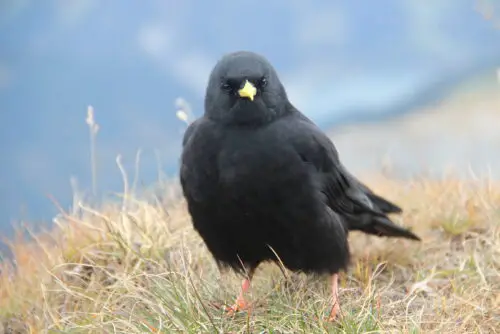
The Alpine Chough is a medium-sized bird with a glossy black plumage and bright yellow bill.
They are well-adapted to the high altitudes of the Alps and can often be spotted near mountain peaks, soaring above the treeline.
These sociable birds are known for their acrobatic flight and loud calls, which make them easy to spot in the alpine environment.
In the Alps, they typically breed in rocky crevices and forage for food in the meadows and on snowfields.
2. Golden Eagle (Aquila chrysaetos)
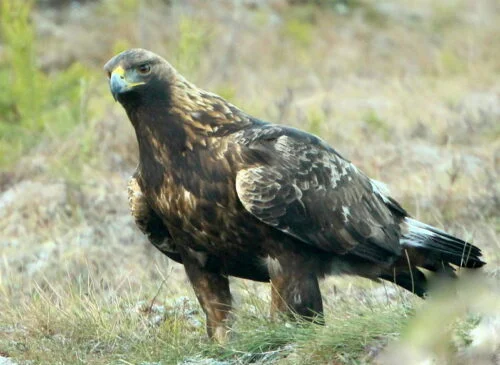
The Golden Eagle is a large, powerful raptor with a wingspan of up to 2.3 meters. Sporting dark brown plumage with golden feathers on their heads and necks, these eagles are known for their incredible agility and hunting prowess.
In the Alps, they can be seen soaring over the mountains and forests, scanning the terrain for prey. Golden Eagles prefer to nest on rocky cliffs and ledges, making the alpine region a perfect habitat for them.
3. Wallcreeper (Tichodroma muraria)
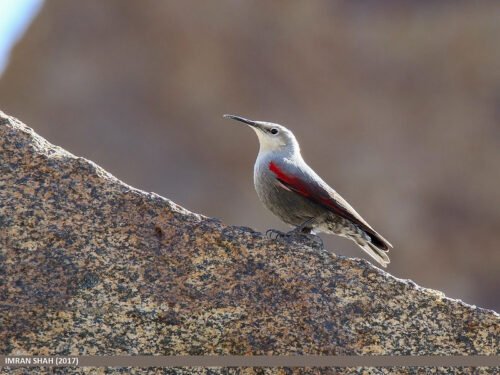
The Wallcreeper, a small bird with striking plumage, is a fascinating species to spot in the Alps.
With their crimson wings and grey bodies, they can be seen scaling vertical rock faces in search of insects.
Wallcreepers are primarily found in the higher elevations of the Alps during the breeding season, with some descending to lower altitudes during winter.
They prefer rocky environments, such as cliffs and crags, and are known for their unique climbing abilities.
4. Nutcracker (Nucifraga caryocatactes)
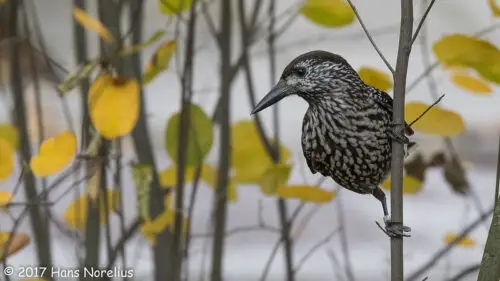
Nutcrackers are medium-sized birds with dark brown plumage, a long, pointed bill, and a distinctive white streak on their wings.
They are commonly found in the coniferous forests of the Alps, where they primarily feed on pine seeds.
These birds are known for their remarkable caching behavior, as they store seeds in the ground to eat later.
Nutcrackers play a crucial role in the regeneration of forests by dispersing the seeds of various tree species.
5. Snowfinch (Montifringilla nivalis)
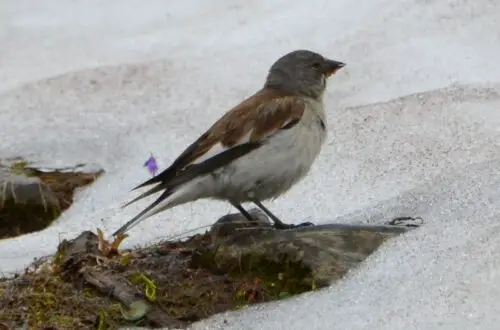
The Snowfinch, also known as the White-winged Snowfinch, is a small, sparrow-like bird with a grayish-brown body and white patches on its wings and tail. These birds are well-adapted to the harsh alpine environment and can be found in rocky habitats above the treeline.
In the Alps, Snowfinches typically breed in crevices and holes in rocks or stone walls.
They primarily feed on seeds and insects and are known for their gregarious behavior, often forming large flocks.
6. Black Grouse (Tetrao tetrix)

The Black Grouse is a large game bird with a striking appearance, featuring glossy black plumage and a distinctive red wattle above the eyes. Males are particularly notable for their impressive courtship displays, known as lekking.
In the Alps, Black Grouse inhabit a range of habitats, from alpine meadows to forest edges.
They typically breed in dense vegetation and forage for food
7. Bearded Vulture (Gypaetus barbatus)
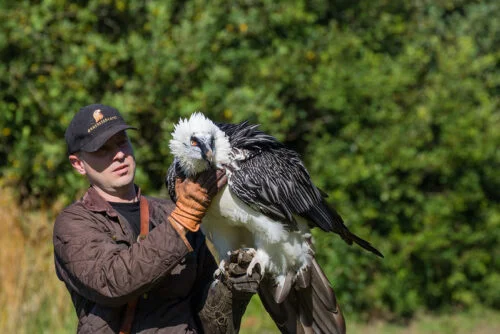
The Bearded Vulture, also known as the Lammergeier, is an impressive and distinctive bird of prey with a wingspan of up to 2.8 meters. Adults display dark gray to rusty-brown plumage and a beard-like tuft of feathers around their beaks.
These vultures are primarily found in mountainous regions of the Alps, where they inhabit cliffs and high-altitude rocky landscapes.
Bearded Vultures are unique among vultures in that they primarily feed on bones, which they drop from great heights to break open and access the marrow.
8. Rock Ptarmigan (Lagopus muta)
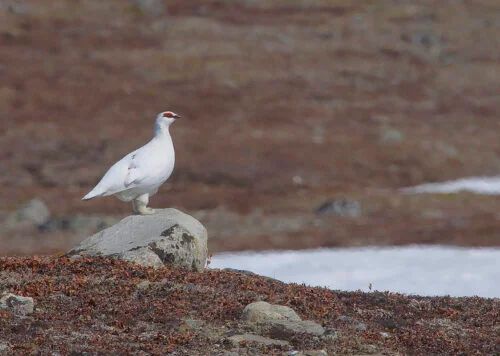
The Rock Ptarmigan is a small game bird with a remarkable ability to change its plumage according to the season.
In the winter, these birds sport a white plumage, while during the summer, they display a mix of brown, gray, and black feathers.
Rock Ptarmigans inhabit the alpine and subalpine zones of the Alps, where they prefer rocky terrain and tundra-like vegetation.
They primarily feed on leaves, buds, and berries, and are known for their low, croaking calls.
9. Eurasian Crag Martin (Ptyonoprogne rupestris)

The Eurasian Crag Martin is a small, agile bird with dark, glossy plumage and a white patch on its rump.
These birds can be found in the mountainous regions of the Alps, where they inhabit cliffs, gorges, and rocky outcrops.
They are known for their acrobatic flight and swift, darting movements as they catch insects in midair. In the Alps, Eurasian Crag Martins typically nest in small colonies, building their nests on ledges or in crevices of rocks.
10. Water Pipit (Anthus spinoletta)
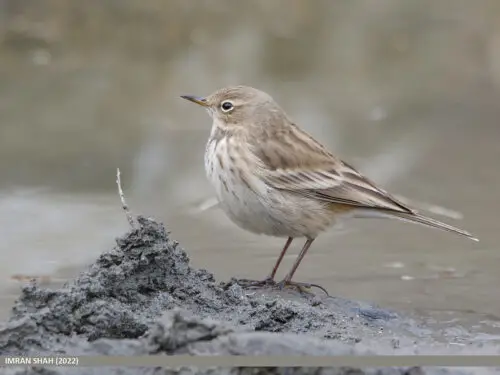
The Water Pipit is a small passerine bird with a streaked, grayish-brown upper body and a pale, buffy underbelly.
In the Alps, they can be found in alpine meadows, grassy slopes, and near mountain streams.
During the breeding season, Water Pipits can be seen performing aerial displays, which include singing and wing-fluttering while in flight.
Their diet primarily consists of insects and other invertebrates, which they forage for on the ground.
11. Ring Ouzel (Turdus torquatus)
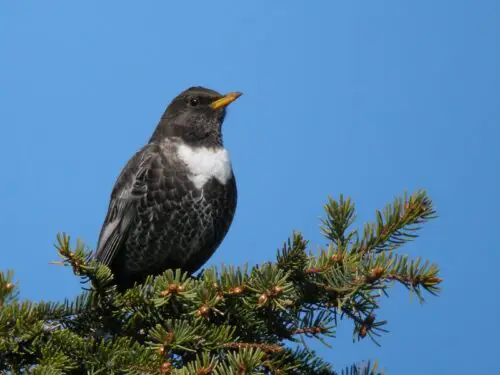
The Ring Ouzel is a medium-sized thrush with a striking appearance, featuring a blackish plumage and a distinctive white crescent on its breast.
They inhabit the rocky slopes and scrublands of the Alps, often in close proximity to streams and other water sources.
In this habitat, they forage for a variety of food, including insects, berries, and small fruits.
Ring Ouzels are known for their melodic, flute-like songs and their skulking behavior, often remaining hidden in the undergrowth.
12. Alpine Accentor (Prunella collaris)
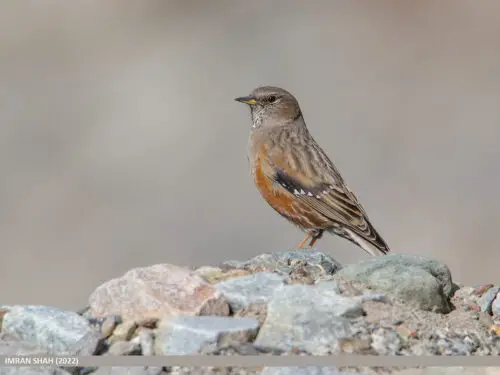
The Alpine Accentor is a small, robin-sized bird with a streaked brown upper body and a distinctive rusty-colored throat.
These birds inhabit the rocky and grassy slopes of the alpine and subalpine zones in the Alps.
They are often seen in small groups, hopping and flitting among rocks in search of insects and seeds.
During the breeding season, Alpine Accentors are known for their aerial courtship displays, which involve the male singing and performing fluttering flights above the female.
13. Alpine Swift (Tachymarptis melba)
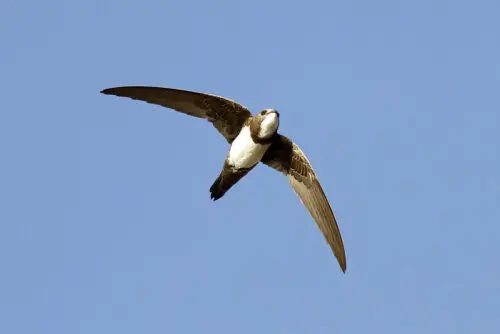
The Alpine Swift is a large, fast-flying bird with a dark brown upper body, white underparts, and a distinct pale patch on its throat.
With a wingspan of up to 57 cm, these swifts are remarkable aerialists, capable of spending long periods in flight, even sleeping and mating on the wing.
In the Alps, they can be seen soaring above cliffs, gorges, and other rocky habitats, where they nest in large colonies.
Alpine Swifts primarily feed on flying insects, which they catch during their agile and swift flights.
14. Black Redstart (Phoenicurus ochruros)
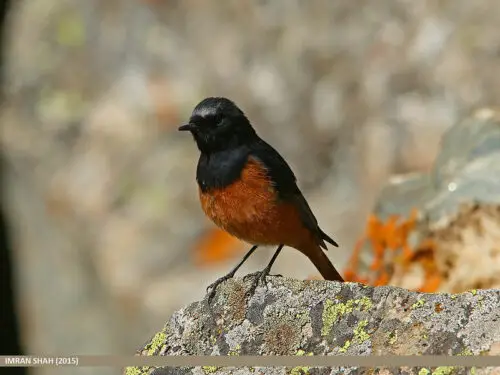
The Black Redstart is a small, robin-sized bird with distinctive black and orange plumage.
Males feature a blackish-gray body with a bright orange-red tail, while females are more subdued in color, with a brownish-gray body and a duller tail.
In the Alps, Black Redstarts can be found in a variety of habitats, including rocky slopes, alpine meadows, and even human settlements.
These birds primarily feed on insects and other small invertebrates, which they forage for on the ground or catch in midair.
Black Redstarts are known for their distinctive, warbling songs and their habit of flicking their tails while perched.
15. Common/Northern Raven (Corvus corax)
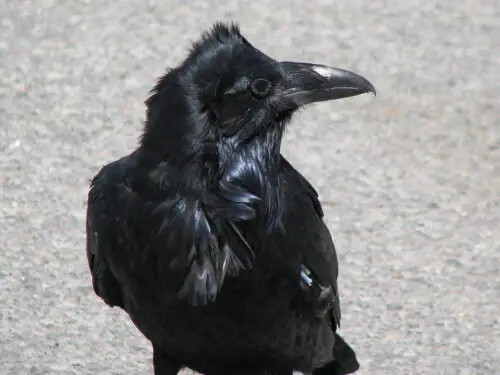
The Common Raven is a large, highly intelligent bird with a glossy black plumage and a distinctive wedge-shaped tail.
These adaptable birds can be found in a wide range of habitats across the Alps, from dense forests to rocky cliffs and alpine meadows.
Common Ravens are known for their impressive problem-solving abilities and their extensive vocal repertoire, which includes mimicry of other bird species and even human sounds.
In the alpine environment, they primarily feed on carrion, insects, and small mammals, often scavenging in groups. Ravens are also known to cache food, storing it in various locations to consume later.
